Lebanese people love stuffing any vegetable with something delicious and swiss chard is another great one to try.
It's relatively quicker to make than stuffed grape leaves as the swiss chard leaves cook faster and are bigger, which means you pack them with more stuffing and be done faster.
Good quality swiss chard is also easier to find in the markets from June to April, meaning you can get fresh leaves for most of the year.
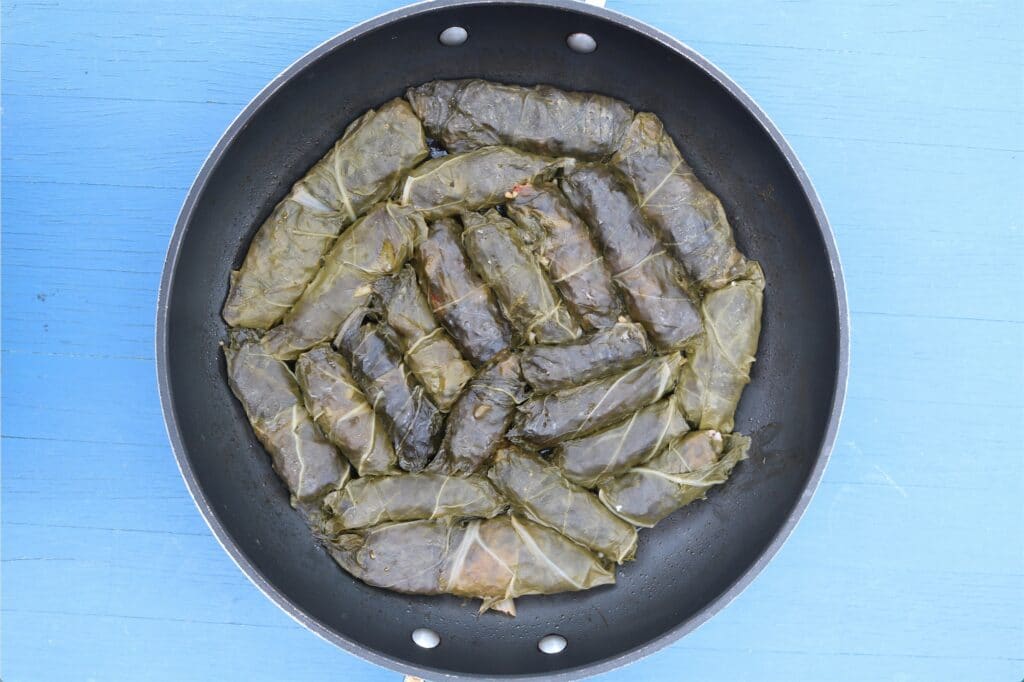
The Swiss chard
Choosing the best quality ingredients is half the job to making anything delicious.
So make sure you choose chard leaves that are not wilted or sad. You can also use rainbow chard which is pretty.

You can tell if the leaves are good by rubbing them between your fingers so they are supple and not too coarse. Trust your instinct.
If you are making a large pot you will probably need to double the amount of chard given in the recipe card.
Instructions
The trickiest bit of this recipe is knowing how to separate and roll up the leaves.
Blanche them in a pot of boiling water for around five minutes then layer them on top of each other to cool.
When you are ready to stuff them, remove the thickest bit of the stem with a sharp knife (you can fry these off later with some olive oil, pepper and lemon).
You need to be quite firm as you roll them up (see video) and arrange them tightly in the bottom of the pot.

If the leaves are very big, you can slice them in half long ways and make two out of one.
Once you roll up all the chard leaves, add some salt to a cup of water to make the brine and cover with a lid one size smaller than your pot.
You can also use a heavy plate as this will help keep the chard rolls in place. You can remove this lid/plate once you bring the pot to the boil and turn the heat to a simmer.

Variations
As with most stuffed vegetables you can make a meat and rice version or a even a mixed one with both vegetables and meat.
For the meat and rice version you can use the stuffing recipe from kousa mahshi (stuffed zucchini).
If you have any left over stuffing you can also blanche lettuce leaves (romaine lettuce is my fav) and add them to the pot, making a delicious addition.
Adding a little chilli powder (¼ tsp) will give it some kick though not too much as it will ruin the spirit of the dish.

Top Tips
Soak the rice beforehand for around half an hour so the dish cooks quicker.
Always use short grain rice for stuffing any sort of vegetable, it soaks up the juices well and doesn't make the dish dry.
You can also add sliced potatoes to the bottom of the pan, just make sure it's a variety that won't fall apart when boiled.
When the dish comes to the boil always taste the brine water too as this well tell you how salty/lemony the overall dish will be and make necessary adjustments.
You should always test one chard roll before turning the heat off to check the rice is done well.
📖 Recipe
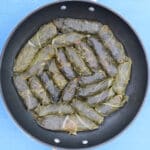
Stuffed Swiss chard
Stuffed swiss chard with rice, parsley and tomatoes
Ingredients
- 2 bunches swiss chard
- pot of boiling water
For the stuffing
- 1 large bunch of parsley
- 4 medium sized tomatoes
- 2 spring onions
- ¼ onion or small shallot
- pinch of fresh mint leaves
- 1 cup short grain rice
- 1 lemons juiced
- ½ tablespoon tomato concentrate
- ½ tablespoon salt
- ½ tablespoon 7 spice
- ¼ cup of regular olive oil
For the brine
- 1 cup of water + ½ teaspoon of salt
Instructions
To make the stuffing
-
Soak the short grain rice in water half an hour before
-
Finely chop the parsley, tomatoes, mint and onions. Add to a bowl
-
Add the rice, salt, 7 spice, tomato concentrate, olive oil and the juice of 1 lemon to the bowl and stir well
To assemble the chard leaves
-
Wash and separate the swiss chard leaves, then blanche in a pot of boiling water for no more than five minutes. Stack onto a plate to cool
-
Prepare your work area with one tray to roll the chard leaves beside the stuffing and cooking pot
-
Lay out one swiss chard leaf on the tray and remove the thickest part of the stem. If the leaf is very large you can split it into two longways
-
Add 1-2 tablespoons of stuffing near the base of the chard leaf. Bring the leaves in from the side and roll upwards firmly. Adjust the mixture amount depending on the size of the leaf
-
Stack the rolled chard leaves neatly in the pot in layers If you have too much liquid in the mixture drain some onto the stacked leaves using a fine sieve
-
Leave around 10cm clear at the top of the pot as the chard leaves will expand when cooked
To make the brine
-
When you finish stacking the pot, add half a tablespoon each of salt and 7 spice to 1 cup of water to cover
-
Press down the chard leaves with a sturdy plate or lid one size smaller than your pot. Pour on the brine and turn the heat on to medium high
-
After 15 minutes, reduce the heat to low and remove the plate/lid. Taste the brine that has come to the surface and adjust the salt/lemon levels as necessary. Cook for another 45 minutes on the lowest heat setting.
-
Taste one chard roll before you turn the heat off to make sure the rice is cooked properly
Recipe Video
Recipe Notes
You can add 300g of ground beef or lamb to the filling. Another way to add meat is dice up fillet of beef or lamb, or add lamb chops to the base of the pot.
If you make any of our recipes let us know how it went by giving us a star rating below.
Check out our Youtube page for full video tutorials, our Facebook group to discuss Lebanese cooking, as well as our tiktok page for quick tips.
You might also like these other recipes from the Zaatar and Zaytoun collection:


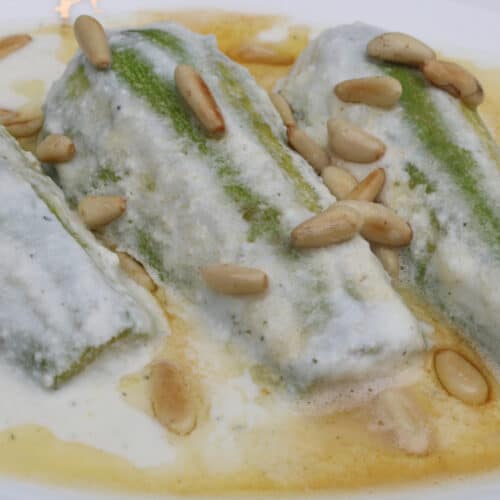
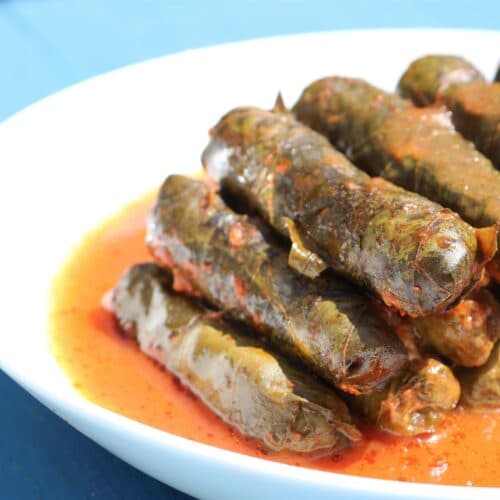
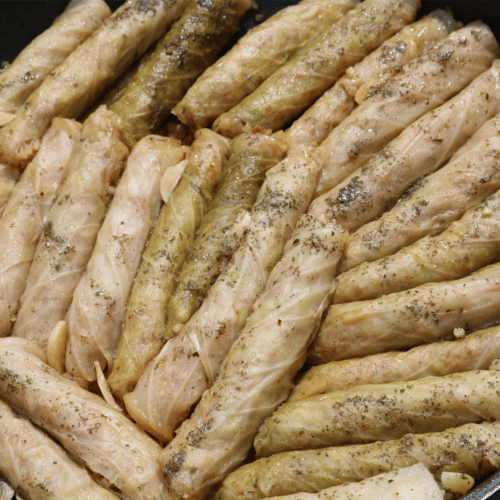
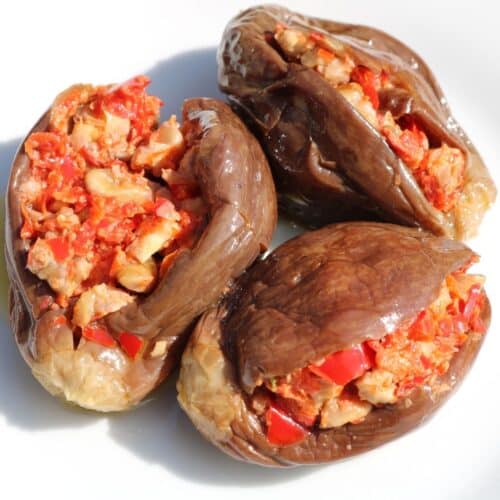



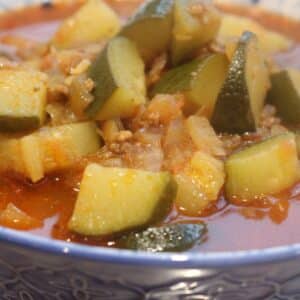
Let us know how it went